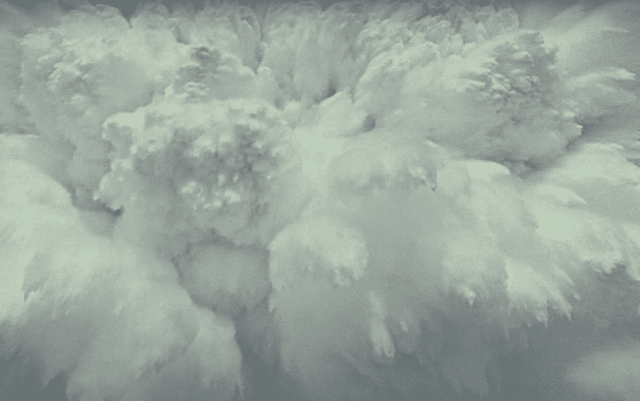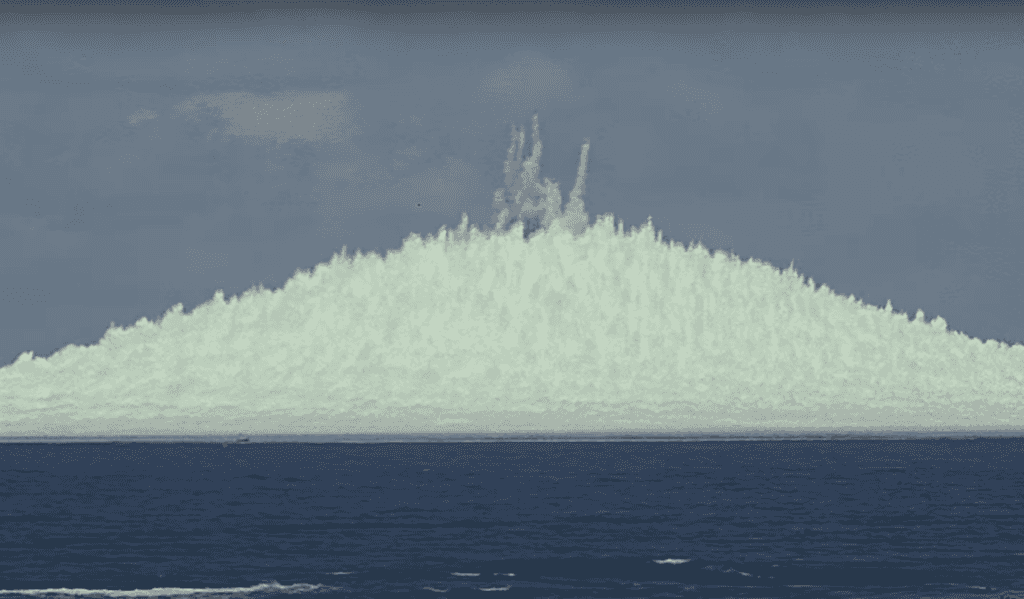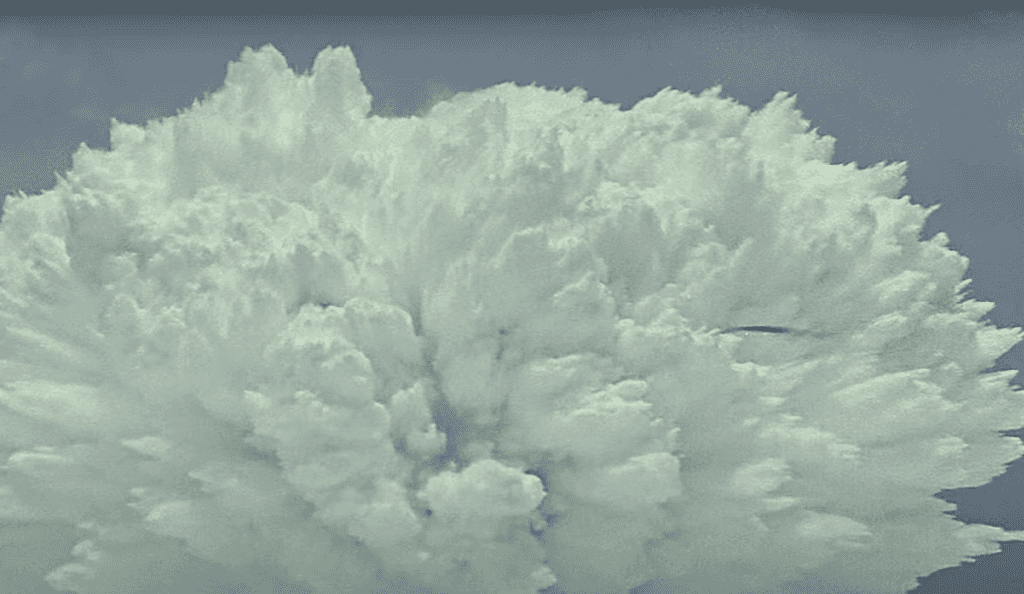
Video: Here’s what a nuke detonated 500 feet underwater looks like A water spray plume after the May 16, 1958 "Wahoo blast" atomic test. (Screenshot)
The years following World War II, often called the “atomic age,” were characterized by efforts to understand the true power of nuclear weapons and the ramifications of a nuclear war. Such understanding was sought by testing the weapons’ devastating effects, including detonation tests underwater.
On May 16, 1958, one such test carried out by the U.S. military and the Atomic Energy Commission (AEC) aimed to determine the capability of a nuclear weapon detonated underwater. The weapons test, which was captured on video and came to be known as the “Wahoo blast,” showcased what a 9 kiloton (the equivalent of 9,000 tons of TNT, measured at 38 terajoules or 38 billion joules) atomic bomb would do when detonated in the open ocean at the Pacific Proving Grounds off the coast of the Marshall Islands. According to the U.S. Nuclear Weapons Archives, the Mark 7 “Thor” nuclear bomb used in the test was detonated from 500 feet underwater.
According to the Atomic Tests Channel, which posted the footage on YouTube, the atomic blast sent a dome-shaped spray of water that reached 840 feet into the air within seven seconds of the detonation. Within 20 seconds, that spray dome rose to 38,000 feet. The plume of spray began to dissipate after 20 seconds.

Not only did the blast demonstrate the sheer power of an atomic bomb detonated underwater, but also the impact such a blast could have on nearby ships. A target ship positioned 5,900 yards (about 3.3 miles) from the blast was hit by the shockwave of the blast, causing it to vibrate and shake violently in the wake of the blast. A merchant marine ship moored 782 yards from the blast was reportedly immobilized by the shock damage its main and auxiliary equipment sustained, and also suffered minor hull damage.
According to the Atomic Tests Channel, all radioactive fallout from the Wahoo blast fell within the predicted fallout area. A five-gallon water sample from the area directly above the blast showed a radiation sample of 5 Roentgen per hour (5 R/hr) an hour and 10 minutes after the blast. According to the U.S. Environmental Protection Agency (EPA), the average terrestrial radiation exposure is between about .0006 to more than .0083 milliRoentgen (a thousandth of a Roentgen) per hour (measured as mR/hr), making the radiation from the blast about 602,409 more prevalent than normal radiation levels. The average radiation exposure in a commercial airline flight is about .2mR/hr, making the radiation from the blast about 25,000 times more prevalent than that seen experienced on a commercial flight.

The Wahoo blast was part of a series of 35 atomic blast tests conducted between April 28 to August 18 in 1958 at the Pacific Proving Grounds, known as Operation Hardtack I. According to the Arms Control Association, the U.S. has tested a total of 1,030 nuclear weapons, not including the two it used against Japan towards the end of World War II.
The 1958 Wahoo atomic blast doesn’t even demonstrate the most powerful nuclear weapons currently available. The B83, the strongest weapon currently in the U.S. nuclear arsenal has an estimated force of 1.2 megatons of TNT (five petajoules, or five quadrillion joules), more than 133 times more powerful than the one detonated in the Wahoo blast. Russia’s most powerful nuclear weapons test, the AN602 (also known as the “Tsar Bomb”) reportedly measured 57 megatons of TNT, more than 47 times more powerful than the U.S. B83 and 6,333 times more powerful than the Wahoo blast.




